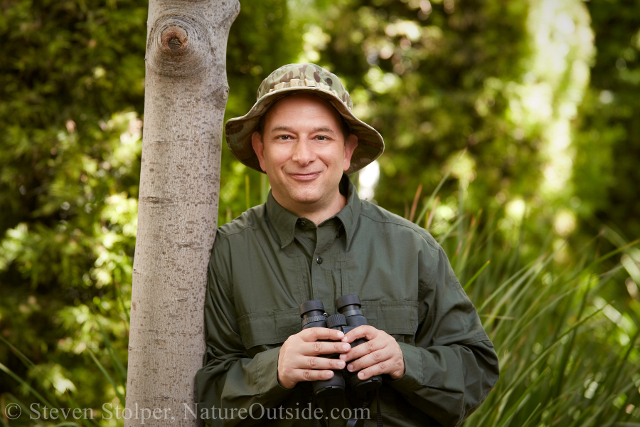
I am joyful, delighted, elated, ecstatic, and even a little giddy! Please let me share my good fortune with you: I graduated from the California Naturalist Program. I am a California Naturalist.
Get with the Program
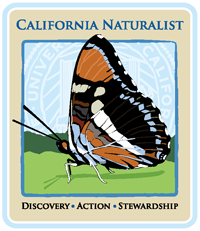 I had never heard of the California Naturalist program before the head interpreter at a local state park recommended it to me. It was perfect.
I had never heard of the California Naturalist program before the head interpreter at a local state park recommended it to me. It was perfect.
The University of California runs the program to engage the public in the study and stewardship of California’s natural environment. Basically, they want to grow naturalists. This has become increasingly urgent now that naturalists have become an endangered species.
The course’s science curriculum focuses on hands-on learning, problem-solving, and community service. The goal is to instill a deep appreciation for our natural environment, and to inspire individuals to become stewards of their local resources.
Lectures/Field Trips
The program runs 10 weeks, with a 2.5 hour lecture during the week and full-day field trips on weekends. One of the trips is a three-day overnight outing.
Capstone Project
Each student must complete a “Capstone Project” to graduate. It is an opportunity for students to improve their knowledge and abilities by working on a project. The project also forms a bridge between the class work and the volunteer service required of each graduate (see volunteer section below).
Here are the four project areas we could choose from, with examples of possible projects:
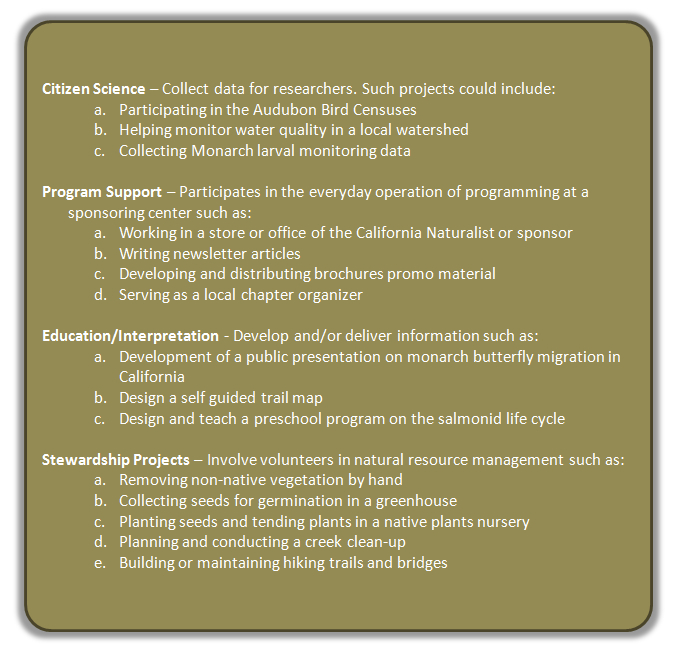
Volunteer work
To complete the certification, all students must perform 40 hours of volunteer work over the year following the class.
Are you Talking to Me?
I was attracted to the program not by the certification, but by the education it provides. The speakers are marvelous! They are all working scientists or professional naturalists. They are practitioners, not talking heads. Each is knowledgeable, enthusiastic, and eager to share what they know with the students. Here are some of the speakers and their topics. Many lecturers spoke to the class during the week and led a full-day outing on the weekend.
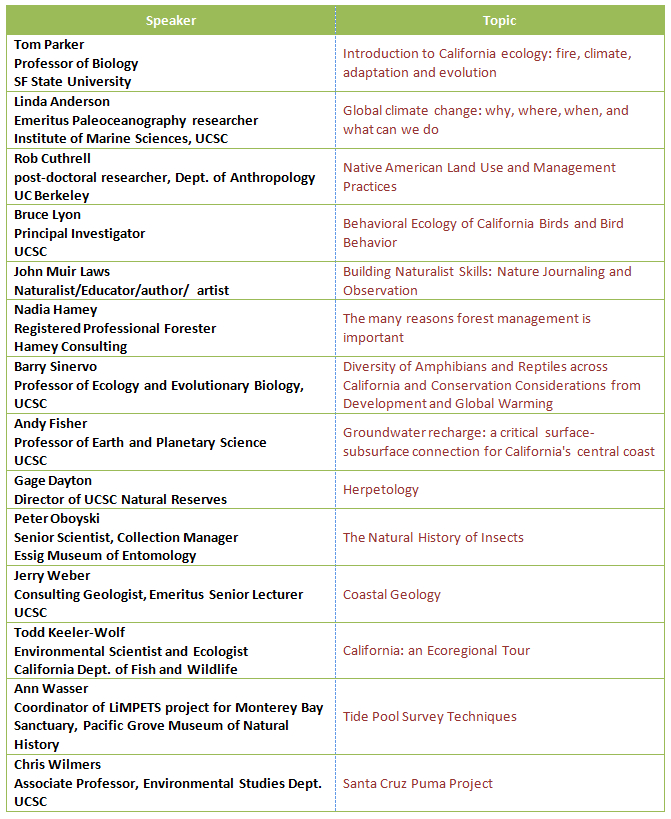
These are people who I would not ordinarily have the opportunity to meet. So the class was like attending an all-star baseball game!
One of the most pleasant surprises was the students themselves. They came from a wide variety of professions and ran the gamut from recent college graduates to professional naturalists. Everyone seemed to have a different specialty and was eager to help the other students. There were several students like me who were interested in bushcraft skills. Others were fascinated by plants, or reptiles, or insects. I learned a tremendous amount from the other students and am sure I will cross paths with many of them in the future.
Far Out, Dude!
The trips are amazing. The experts who guide the trips did more than just point and name. Many taught field skills that were some of the most valuable things I learned. It was real dirt time!
Here are pictures from some of the trips.
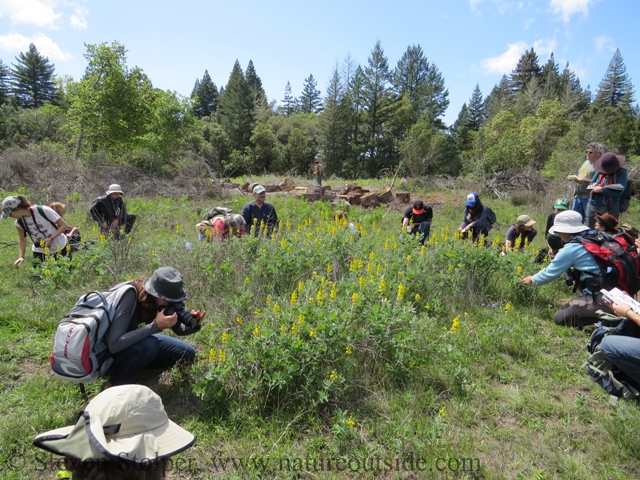
Naturalists in training (False Lupin – Thermopsis)
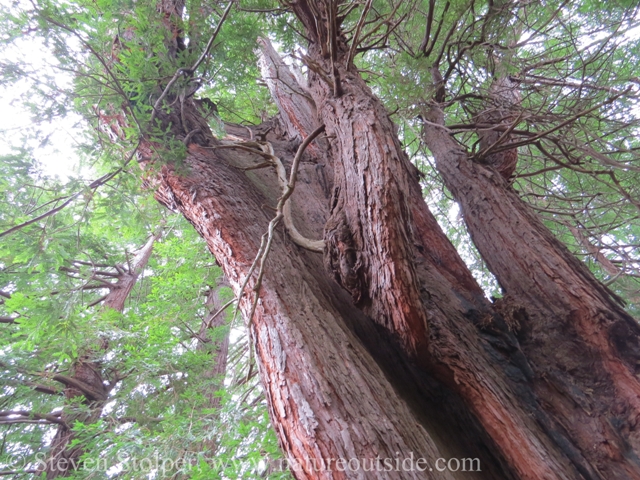
Amazing old growth Redwood Tree
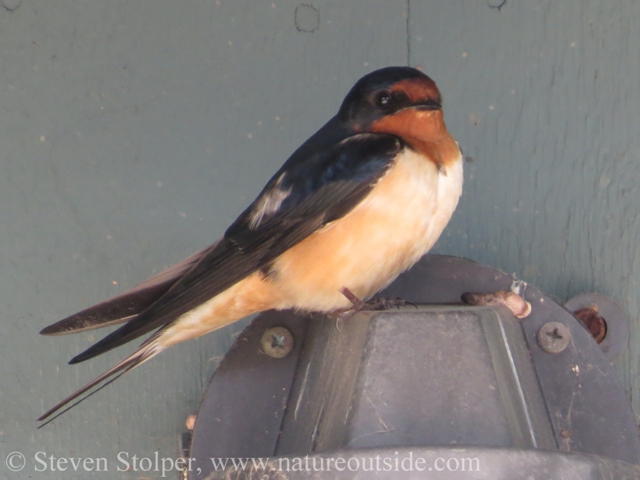
Barn Swallow
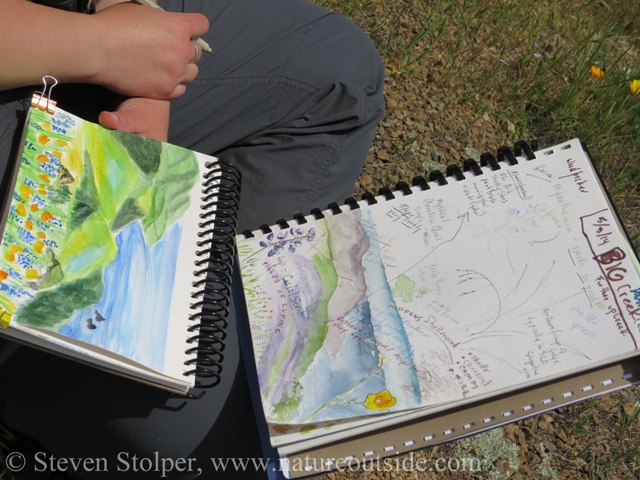
Learning to journal. I am terrible at it but working to improve
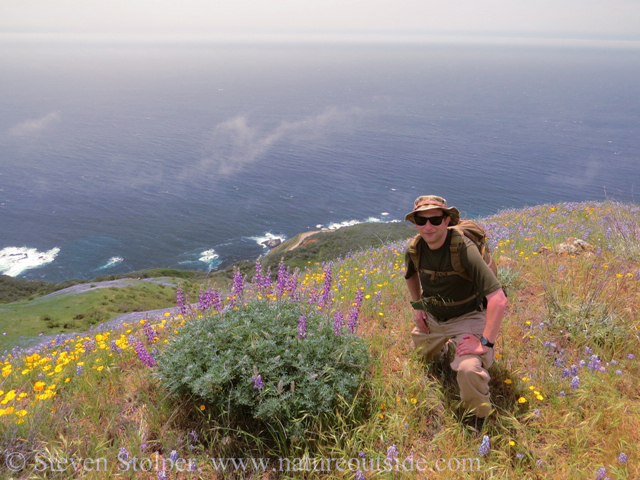
We visited amazing places. I am posing beside an enormous Lupin.
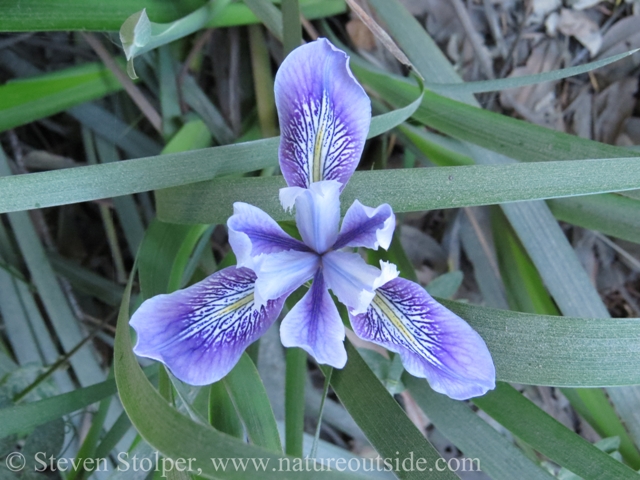
Douglass Iris. I learned to appreciate small details.
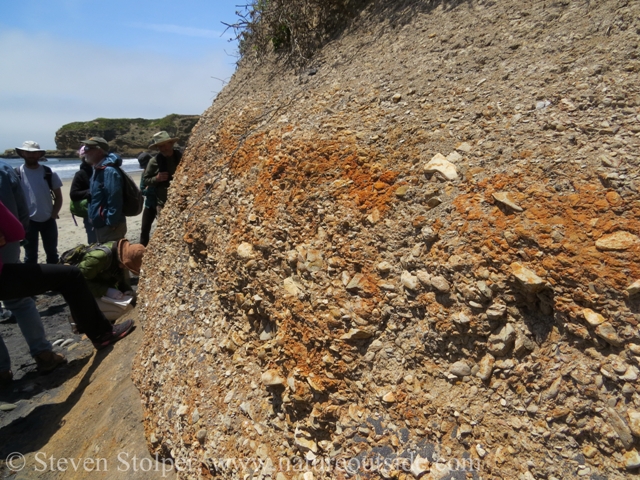
10,000 year old creek bed exposed by erosion. Now I have a better idea how to recognize geologic effects.
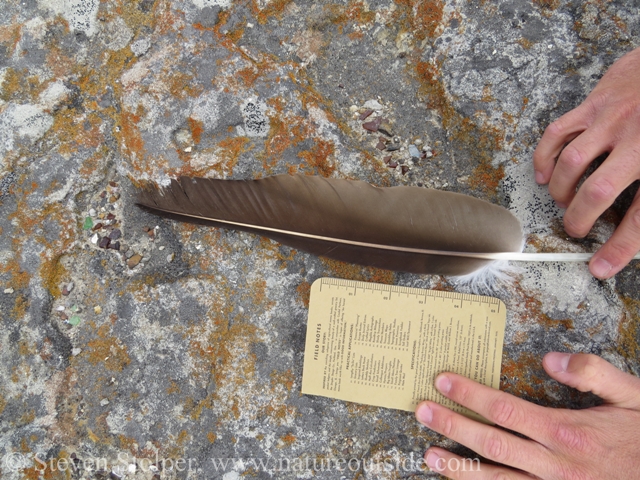
Amazing feather is over a foot long. We used my “field notes” as a ruler.
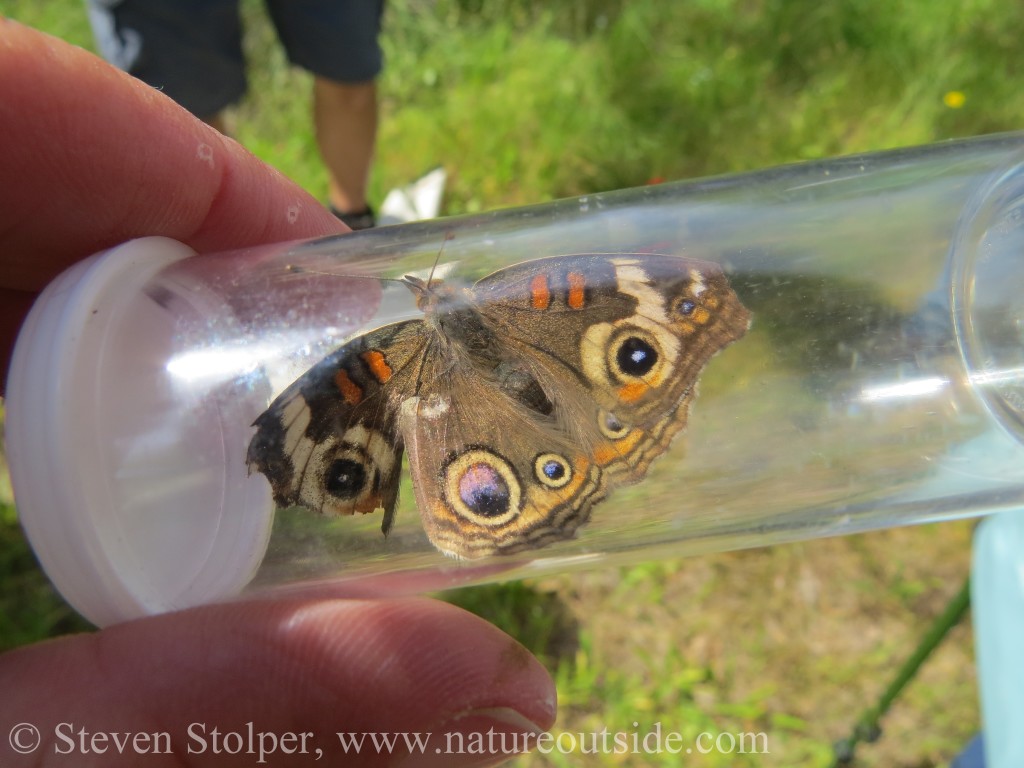
Wildlife at a different scale (Junonia coenia)
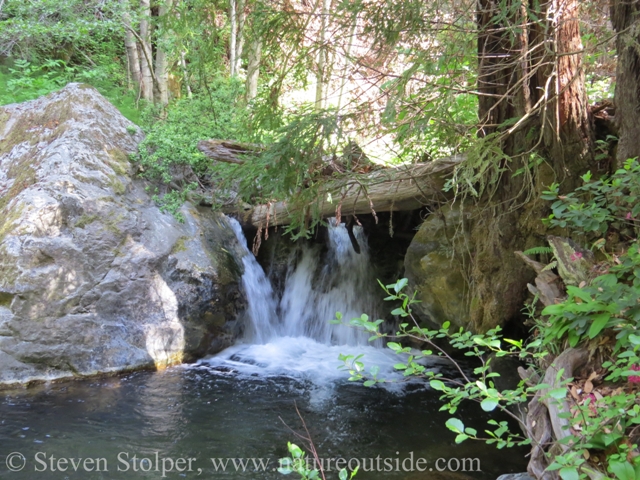
We visited research areas that are kept as pristine as possible.
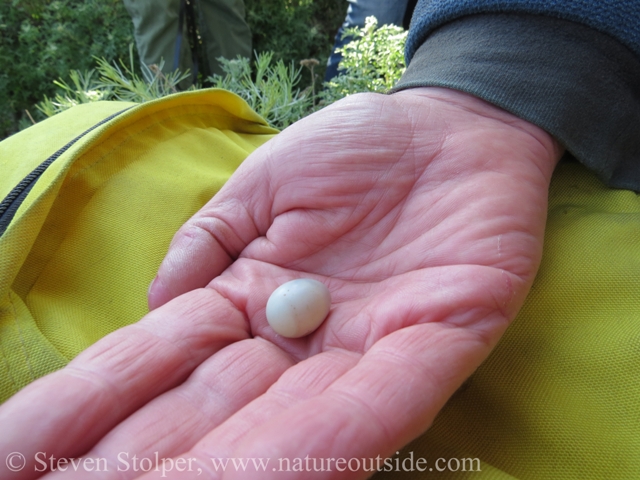
House finch egg

Magnetite on the beach
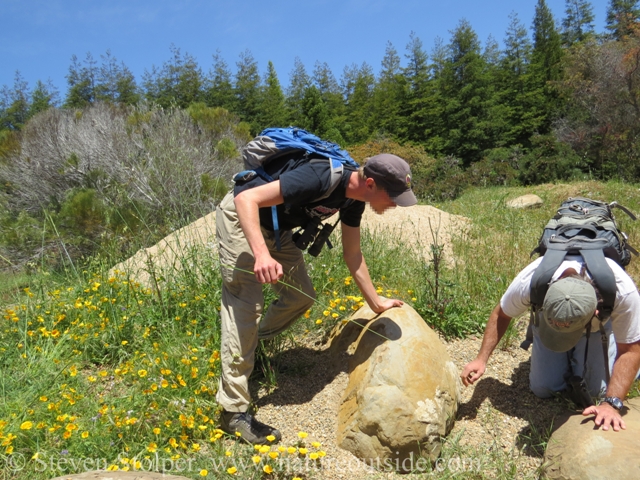
Hunting for ‘herps’
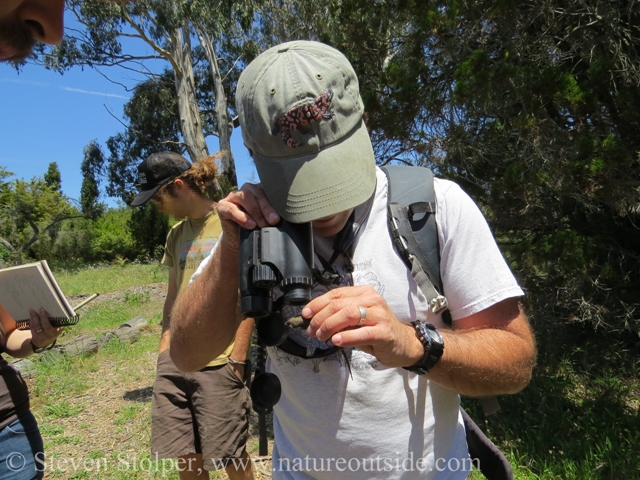
Western fence lizard under glass. We learned to use binoculars, hand lens, and microscope
My Capstone Project
For my capstone project, I wanted something different. My chosen volunteer work is outdoor education. So it would have been easy to compose an interpretive program and deliver it. Instead I searched for a project doing science fieldwork. I wanted to try something outside my comfort zone. And if it allowed me to use bushcraft skills, so much the better!
I searched and found the Conservation Scats project. It is an outgrowth of the Puma research being done in the Santa Cruz Mountains.
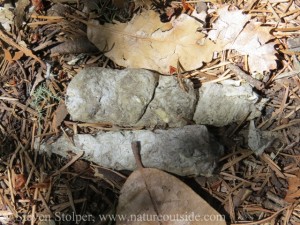
Bobcat scat
The researcher is studying anthropogenic (human caused) effects on small carnivores. Using new DNA analysis techniques, she analyzes scat to determine what species the animals are eating. She hopes to see if human activity causes small carnivores to become more nocturnal, or if different species begin to compete with each other for the same food source. I actually have some concerns about the experimental design. But my job was to assist her work as a volunteer.
It was not glamorous work. Basically, I collected scat for her analysis. The DNA must be “fresh”, which means the scat must be no more than one week old. So my job consisted of two steps. I covered a 6-mile wilderness area, removing all the scat I found. I returned to the same area the next week to collect the “fresh” samples. Remember, scat serves as a communication mechanism between individuals. So it was a given that the animals would “re-poop” the area I cleared. For each sample, I identified the species, photographed the scat, and then collected and labeled it.
It was hot, laborious work because of the scorching weather and the need to observe carefully. But it was wonderful to do some animal tracking and get dirt time while assisting science for the public good.
Volunteer Work
I have already completed 10 of the 40 hours of volunteer work that I must do in the year following graduation. I routinely run hikes and workshops for a local state park. I also bring urban youth into the outdoors to hike, backpack, camp, sea kayak, and whitewater raft. So I expect to have the 40 hours completed within the next six months.
You Can Do it Too!
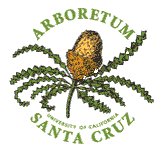 You can do this too! Most states have programs like California’s program. The programs are usually given at several different locations throughout each state. I took my class at the University of California, Santa Cruz, Arboretum. It was an amazing setting for a naturalist course. But the course is also offered at other sites across California.
You can do this too! Most states have programs like California’s program. The programs are usually given at several different locations throughout each state. I took my class at the University of California, Santa Cruz, Arboretum. It was an amazing setting for a naturalist course. But the course is also offered at other sites across California.
I heartily recommend you investigate programs like this one. They are invaluable not just for the knowledge they teach, but for friendships they create. Not three weeks after the class, I bumped into another student on a backpacking trail. She was training for a multi-day backpack trip through her native British Columbia. We both got a good laugh out of encountering a familiar face in such an unexpected place.
Further Reading
Here are the textbooks we used in the class. They make good reading even if you do not plan to take the course. You can click on each picture to see the Amazon.com page for that book.
Share your Thoughts
Have you taken a course like this one? Are you contemplating taking a similar course? Share your thoughts in the comments section below.
Naturalist-related articles on NatureOutside
5 Reasons Why You Should Keep a Journal (and my secret for how to do it!)
Archaeology, Technology, and Native Peoples
Naturalists are an Endangered Species
Why Volunteering is Good for You
Birds Think You are a Scary Dinosaur
For fun facts and useful tips, join the free Bushcraft Newsletter.

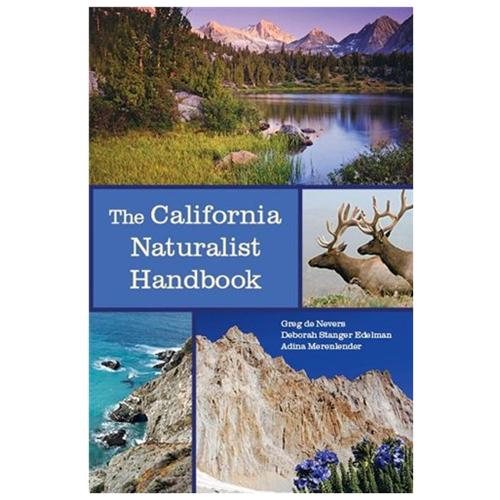
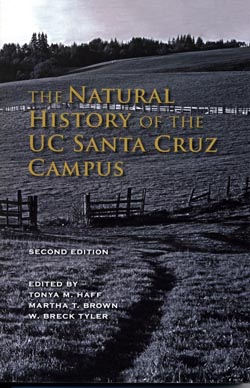


Steve, As the programs’s statewide rep, let me say will be the highlight of the month for our staff to read! Neat capstone project and thanks for sharing your enthusiasm for nature!
Thanks, Brook! Please let the staff know how much we appreciate them for making this wonderful program available to us.
I should also mention that our teachers, Brett and Linda, went far beyond the call to give a terrific course. For example, Brett ran extra sessions for those of us wanting to learn the intricacies of how to key plant species using The Jepson Manual. Both he and Linda put a lot of effort into the course, and it showed!
– Steve
I recently finished a 1 week California Naturalist Immersion Course. This course was co-sponsored by UC Merced and the Yosemite Conservancy and held at the Sierra Nevada Research Station in Wawona. It was a great experience! The lecturers were all experienced in their specialties, we had the wonderful environment of Yosemite to explore and all of the other class members had great stories to tell and inspirational ambitions for their future as naturalists. I have been doing nature volunteer work for a little over a year and this course has opened my eyes to new ways to continue to expand on my love of nature and my interest in helping others enjoy and preserve it.
Congratulations on completing the course, Wesley! And thank you for sharing your experience with us. It sounds like you had great time.
Best wishes for more wonderful adventures!
Hi Steve,
I really enjoyed this! I work at the Don Edwards San Francisco Bay National Wildlife Refuge in Alviso. I have been co-teaching a CA Naturalist Class and Certified Interpretive guide class at West Valley college in Saratoga. It’s been a challenge to tie in both certificates but has been a lot of fun! We hope to offer this again in Fall 2016. Rumor has it Acterra is planning a CA Nat course in Redwood City and the Refuge hopes to be one of the field trips/capstone projects.
Hi Julie! It’s wonderful that you’re making these classes possible. Hopefully NatureOutside readers will see your comment and sign up for your class.
What would you recommend for a person who is disabled and not able to do much more than the coursework?
I get outside as much as I can, but health doesn’t allow it for more than an hour or 2 a day.
But I’ve long admired this program.
And you should be very proud of your accomplishment.
Am I just out of luck and need to look at online classes?
Nancee, I do think you can do it. The teachers I met who run California Naturalist programs are terrific. I’m sure they would be able to accommodate you. I will send you Email and we can figure out the next step.
Hello Steven!
I wanted to thank you for this information. I am currently enrolled in the CA Naturalist program near Sacramento; attending classes at the Effie Yeaw Nature Center.
I am in the process of declaring my Capstone Project and this page has been a great help.
And I’m glad to know I’m not the only one who struggles with journaling!! I’m comfortable writing but my drawings leave a lot to be desired!! I will keep working at it.
Thank you!
Kathy Moorse
Kathy, congratulations on becoming a California Naturalist! It can be the start of a wonderful journey.
Great information! I’m from Santa Cruz and looking into the project but wanted to know what to expect. Went through your whole article and love that I know what to plan for now when I take the course! I liked how you mentioned the lecturers were like superstars you would have never met otherwise, I definitely feel like that while interning at the Seymour center. It’s amazing meeting people you never would have otherwise! Like you!
Haley, I’m glad you enjoyed the article. The California Naturalist Program is amazing and I hope you get to do it.
Hi, Steve: Thanks for this informative and enthusiastic story. I am due to start the Yerba Buena California Naturalist Program in April, and reading about your experience was really helpful. Now I’m even more excited! Thanks so much.
Kate, good luck with your California Naturalist program! You’re going to have a great time!